September 12, 2022
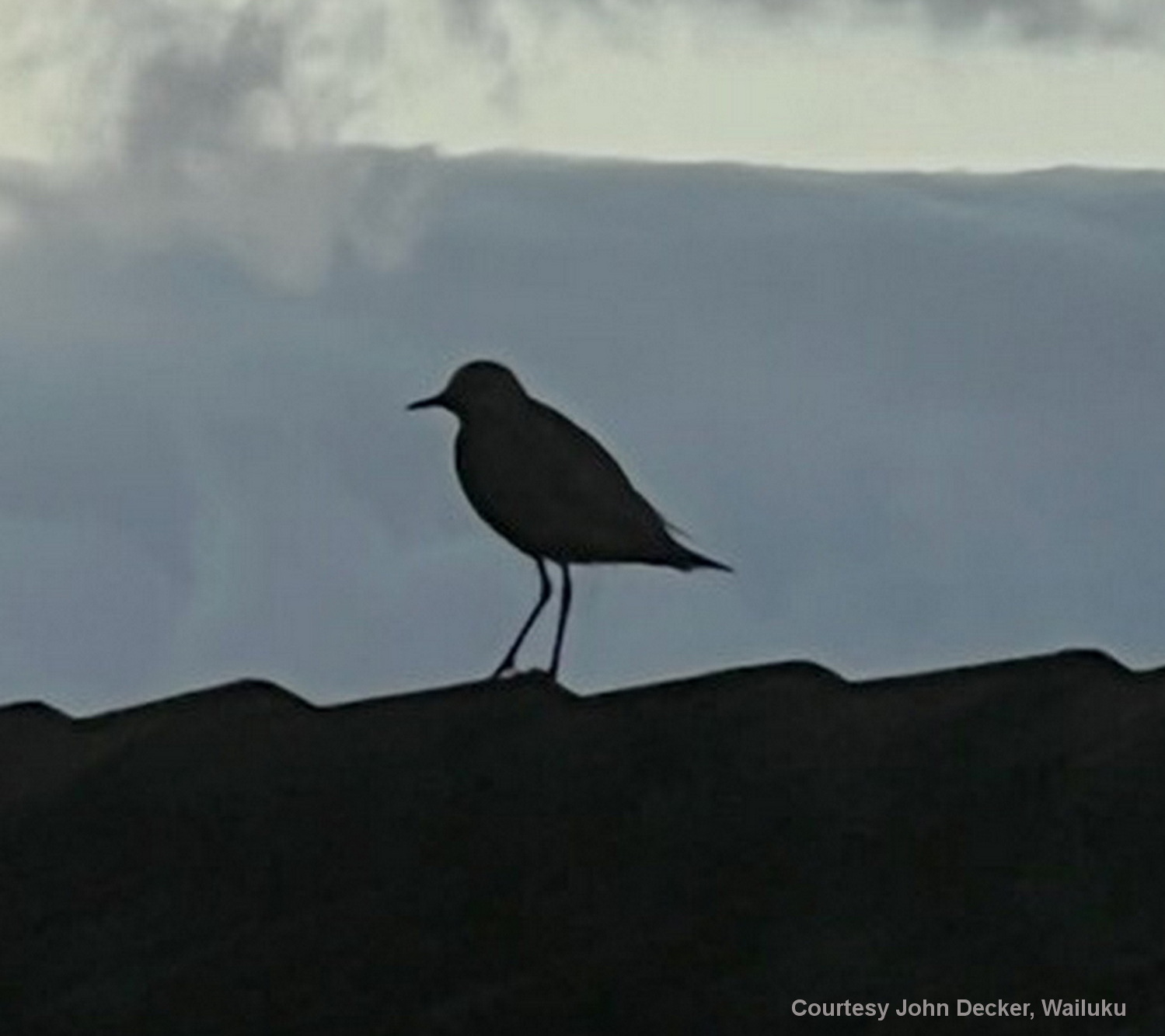
Thanks to Christine Donnelly, the Honolulu Star-Advertiser’s Kokua Line columnist, a lot of plover fans recently signed up to help monitor Hawaii’s much-loved shorebirds, the Pacific Golden-Plovers. Christine explained in her September 3rd column that the KoleaCount website is a way for plover lovers to help answer some basic questions about our marvelous kōlea.
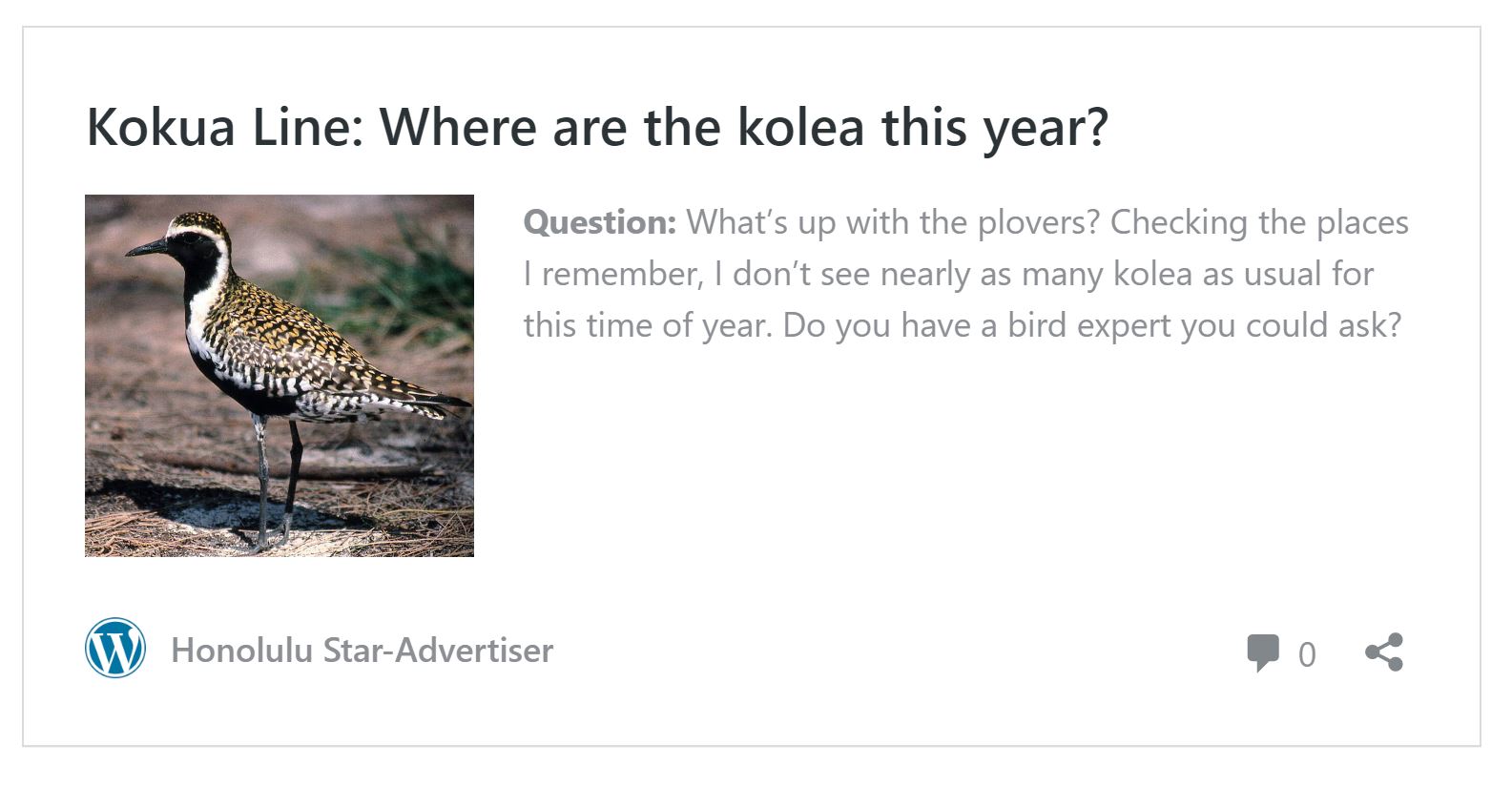
The above clip is from the September 3rd, 2022 Kokua Line. My answers are available only to Star-Advertiser subscribers, but the facts I gave Christine are below, as well as on this website. On September 9th, I also chatted about kōlea with Catherine Cruz, host of Hawaii Public Radio’s “The Conversation.” listen here.
Given that these migratory shorebirds have been coming here for centuries, it surprises people how little we know about our plovers. When to do they arrive? When do they leave? How many spend winters here? How many don’t migrate? And so on. This citizen-science, data-collecting project will, over time, give us some answers.
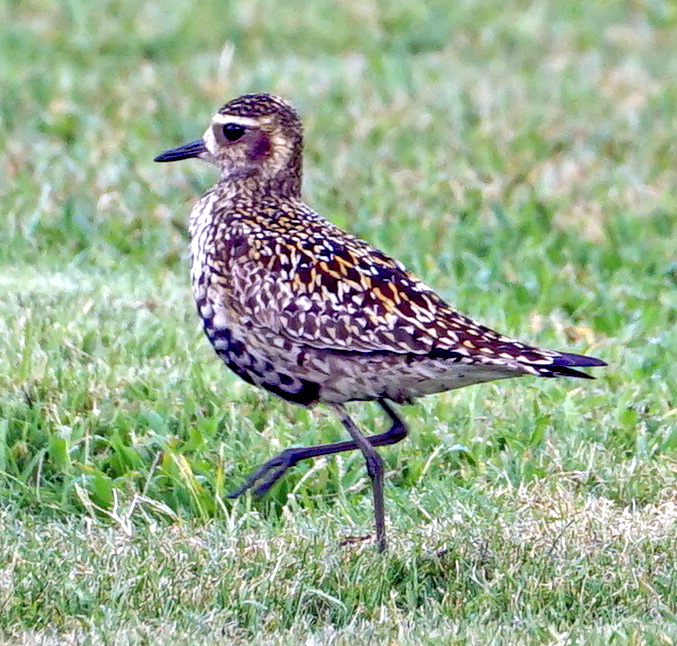
Between 70 and 80 kōlea spend winters in Punchbowl Cemetery. This is the first to arrive back in its Punchbowl patch, spotted by the Hawaii Audubon Society’s office and communications manager, Laura Zoller on August 7, 2022. ©Laura Zoller
I also write about kōlea on my own website, susanscott.net. My August 21st plover update is here: welcome home dear kolea
In other news, the birds that Dr. Wally Johnson tagged in March of this year (kolea get backpacks and bracelets) are returning to Punchbowl cemetery. As of this writing, about 22 of the 30 tagged birds are back in their Punchbowl patches. Several volunteers from Hawaii Audubon Society are checking daily and taking pictures to confirm sightings. I say “about” 22 because the leg band colors of a some birds are unclear in photos. The plovers’ graceful pause with one leg raised sometimes obscures the colors.
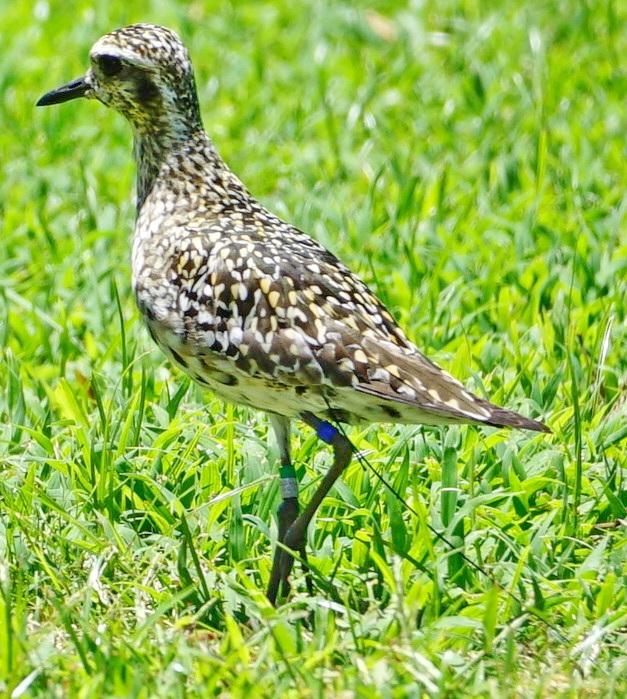
This bird posed perfectly for a picture of its leg bands. The plover returned to Punchbowl on August 22nd, and appeared to be good health after flying 6,000 round-trip miles carrying a tiny satellite tag. (antenna below tail.) © Susanne Spiessberger
Wally will be in Hawaii in October to re-catch the birds in nets and relieve the birds of their tiny backpacks. The $2,500 tags, donated by BYUH, can be recharged and reused.
While he’s here, Wally has offered to treat us plover lovers to a talk on November 6th at the Hawaii Audubon Society’s Annual Meeting.
The gathering this year will be at Sea Life Park, 6-9 PM, with a “Taste of Hawaii” buffet including nonalcoholic beverages, and one of Wally’s informative and entertaining slide shows. Nonmembers are welcome, but please join the Hawaii Audubon Society to help us carry on this, and other, native bird research.
Dinner tickets, $40, are available on the HOME page of the Hawaii Audubon Society’s website here. Buy your tickets early. The number is limited and Wally’s talks are popular.
Thank you kōlea counters for entering arrival dates of your birds. We had 58 reports of birds returned to Hawaii in July. The August reports totaled 1,067 birds. This may not be every bird that made it back to Hawaii in July and August, but it’s a good start on learning more about one of Hawaii’s cherished birds. When I told these numbers to my friend, Sigrid Southworth, a lifelong kōlea fan, she said, “And we thought they returned in September.”
Returned-bird reports continue through November 30th to give the summer’s offspring time to arrive, thrive, and be counted. Depending on Alaska weather, youngsters can get here as late as November.
To all our little travelers returning to the Islands this fall, welcome home. Job well done.
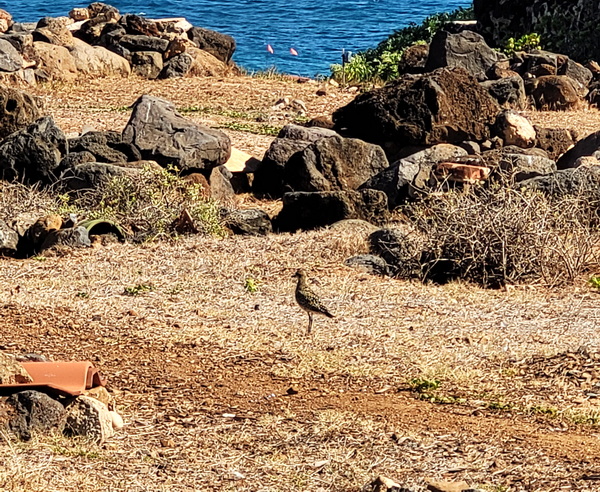
This kolea, nicknamed Doree, returned to Kahala’s “Freeman Seabird Preserve” on August 17th. This is Doree’s third year of gracing this Black Point wedge-tailed shearwater colony, managed by the Hawaii Audubon Society. ©Alice Roberts